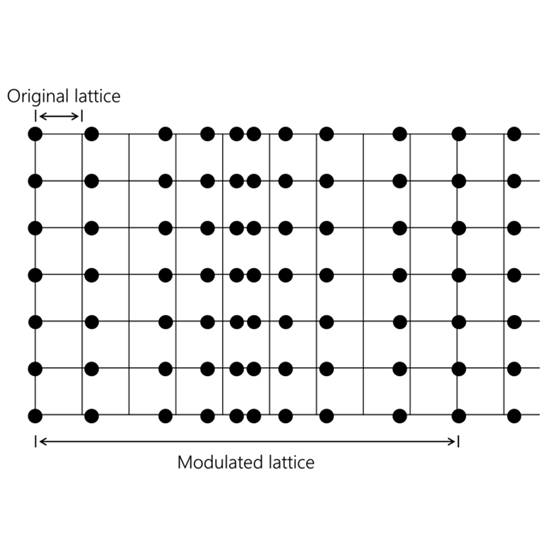What Is a Modulated Structure?
In conventional crystals, diffraction patterns consist of sharp Bragg reflections at positions dictated by the reciprocal lattice vectors of the 3D periodic structure. This reflects the fact that the overall atomic arrangement is fully described by translation of a three-dimensional unit cell.
When modulation is present, the diffraction pattern contains additional reflections, called satellite reflections, beyond the main Bragg peaks. Their positions are shifted from the main reflections by vectors related to the modulation wave vector(s). If the modulation is commensurate, the satellites fall at rational fractional positions relative to the main reflections, and the crystal can still be described by a (larger) supercell. If the modulation is incommensurate, the satellite reflections appear at irrational positions relative to the reciprocal lattice. No 3D supercell can describe the structure in this case, so it is necessary to resort to higher-dimensional coordinates to capture the periodicity.
Modulated structures are important in materials science because they often encode the “hidden order” behind unusual or technologically valuable properties, such as electronic, magnetic, ionic, or thermal. Determining the nature of these modulations is essential to understanding and exploiting the function of the material. The study of modulated structures plays an important role in fields such as materials science and nanotechnology, contributing to both the development of new materials and the understanding of their properties.

Rigaku recommends the following products

Contact Us
Whether you're interested in getting a quote, want a demo, need technical support, or simply have a question, we're here to help.
